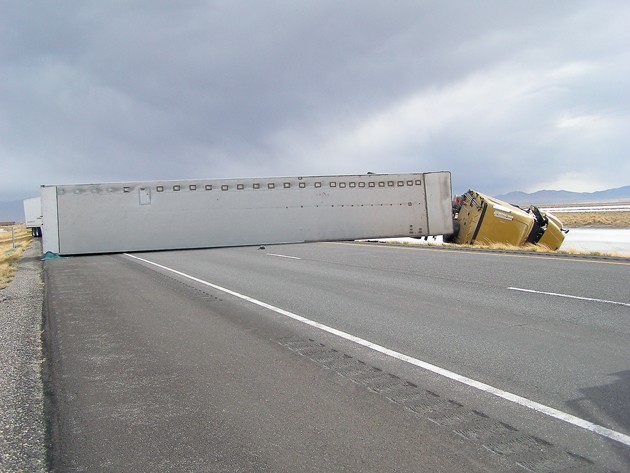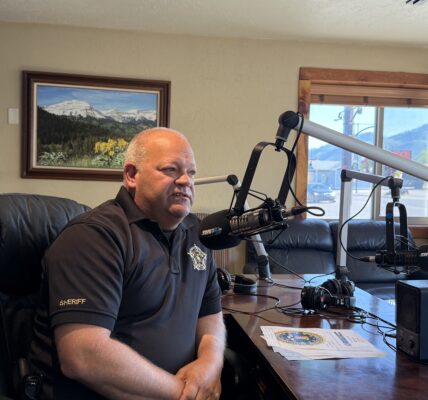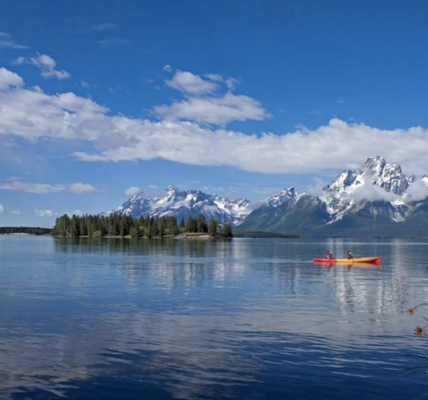By Katie Kull
Wyoming Tribune Eagle
Via Wyoming News Exchange
CHEYENNE – In the late winter and early spring months on highways near Cheyenne, it’s not uncommon on a particularly windy day to see half a dozen semitrailers pushed over on their sides next to the road.
And despite the Wyoming Department of Transportation and other agencies’ efforts to avoid the danger associated with such crashes by issuing warnings for light and high-profile vehicles, over the last four years, the number of blow-over crashes has increased on Interstates 25 and 80.
In 2013, between mile markers 0 and 120.817 on I-25, Wyoming saw 11 blow-over crashes; in 2017, there were 29 such crashes over the same distance, according to preliminary information provided by WYDOT.
On I-80, the numbers have more than doubled. In 2013, on I-80 between mile posts 199.051 and 402.779 saw 15 blow-over crashes. In 2017, that number was 31.
It’s unclear why those numbers have increased so much. But commercial driving experts and law enforcement officers say there’s one common cause: People ignore warning signs or underestimate the power of the wind.
As a truck driver for 30 years and an instructor for Sage Truck Driving School in Cheyenne, Charles Kenworthy got to know all too well the pressures and hazards of driving a 75-foot-long vehicle often weighing several tons.
Kenworthy said despite the pressures of a job paying drivers by the mile and the demand of tight delivery deadlines, safety is paramount.
“A truck driver has to anticipate any future hazard,” Kenworthy said. “We don’t push the envelope of our vehicles at any time.”
Kenworthy teaches several classes on safety concerns such as skid control and driving in dangerous conditions.
Teaching drivers how to avoid a blow-over is simple: “Just believe the sign that’s out there,” he said.
There are no hard-and-fast rules for how heavy or light a vehicle can be to survive the strong winds that occur frequently in the early spring on the high plains.
But Kenworthy said a good rule of thumb for commercial transport trucks is about 1,000 pounds of load for each mile per hour of wind. For example, if the wind is blowing 25 miles per hour, a driver should have 25,000 pounds in his or her load.
But Justin Bowling, the director of Sage Truck Driving School, said there are some points when commercial drivers shouldn’t hit the road at all.
“There are certain amounts of wind that no matter what, nobody should be trying to get the truck and trailer through,” he said.
Wind warnings issued by WYDOT are not enforceable by law, meaning there’s no specific citation for failing to heed the notification.
And Sgt. Kyle McKay, spokesman for the Wyoming Highway Patrol, said it’s nearly impossible for law enforcement to know whether a vehicle is too light to be driving under the conditions until it’s too late.
“It’s hard to judge,” he said.
But Highway Patrol troopers can give the driver a ticket for reckless driving or a different citation once the semitrailer has tipped over.
WYDOT has recently ramped up efforts to get more trucks off the road, partnering with the Colorado Department of Transportation in an effort to make vehicles pull off the highway at designated points.
Light or high-profile vehicles are often stopped at those checkpoints, while passenger cars and trucks without trailers are allowed to continue.
Bowling and Kenworthy said that despite the visible nature of blow-overs, such crashes account for a small percent of crashes each year.
Most truck drivers spend their entire careers without an accident or rollover, and it’s because they follow safety protocols, Kenworthy said.
“There are lots of companies that say if you roll a truck, you’re fired,” he added.
McKay encouraged drivers to heed safety warnings, even if they are on a tight deadline to deliver a shipment.
“We understand that trucks are under pressure of deadlines, and I think people drive into winds not expecting them to be as bad as they are,” he said. “(But) they need to be aware of the conditions, and they need to take responsibility.”





